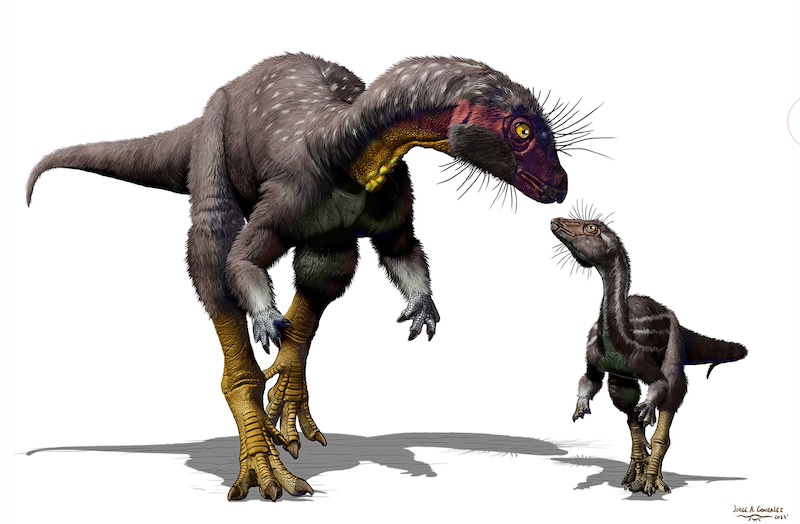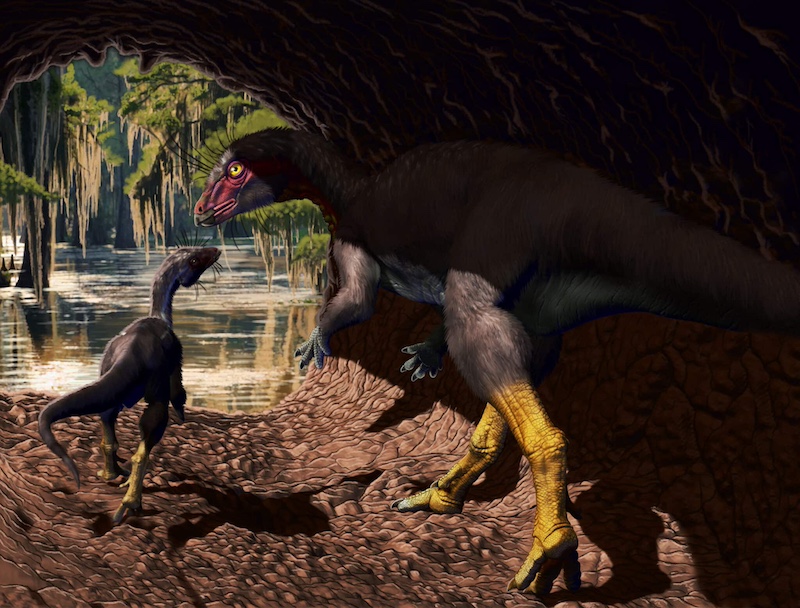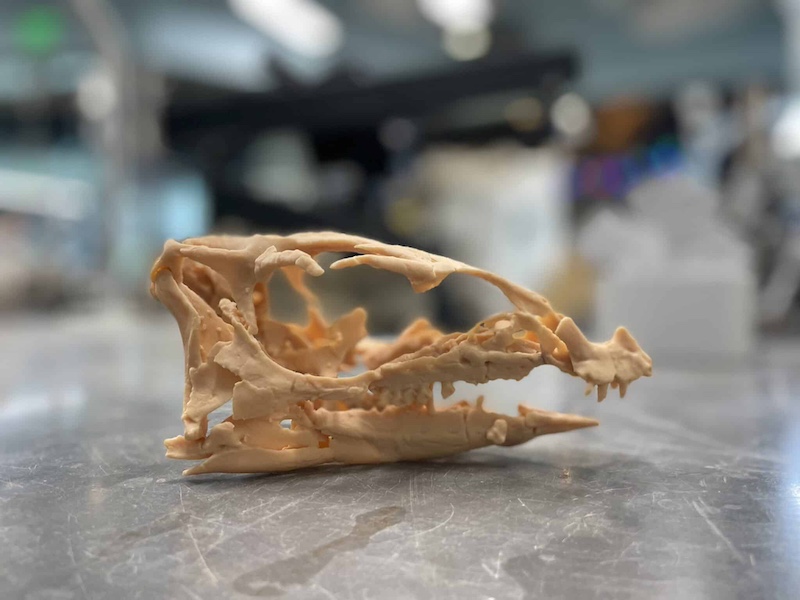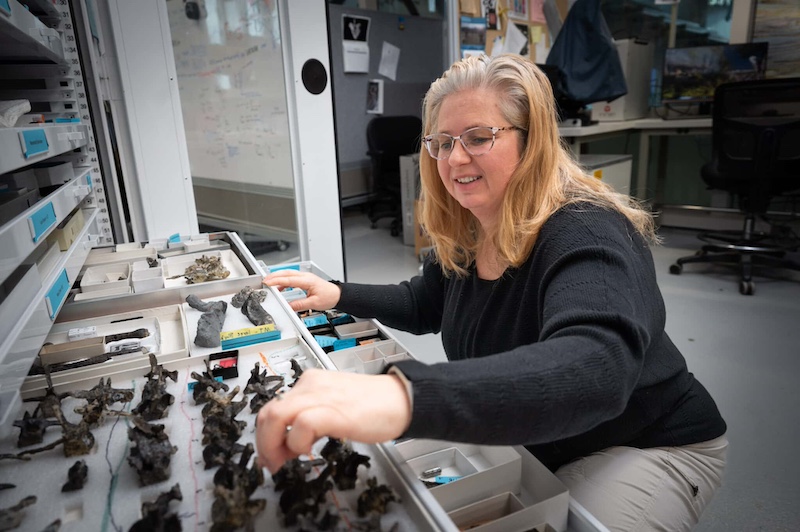
- Fona herzogae was a small dinosaur about the size of a dog that lived underground, making it one of the few known burrowing dinosaurs from 99 million years ago.
- This dinosaur had strong legs and muscles suited for digging, helping it create burrows in the ground for shelter.
- Researchers found many fossils of Fona in Utah, showing that these dinosaurs lived in groups and often stayed in their burrows.
Some 99 million years ago, a dog-sized dinosaur retreated to its burrow in a large floodplain between an inland ocean and volcanoes in what is now Utah. Many ages later, in 2013, researchers from North Carolina State University and North Carolina Museum of Natural Sciences began uncovering these bones along with more fossils of the same species. And on July 9, 2024, the researchers said this newly discovered species of dinosaur – Fona herzogae – spent at least part of its life below ground, in burrows.
The researchers published their peer-reviewed findings in The Anatomical Record on July 9, 2024.
Some dinosaur species spent time underground
Most dinosaurs we know of lived above-ground. But scientists have found evidence that some may have spent time underground. This new dinosaur, Fona herzogae, is one such example. It is closely related to Oryctodromeus, a burrowing dinosaur from Idaho and Montana that lived about 105 to 96 million years ago. In addition, Fona‘s distant relative, Thescelosaurus neglectus, is another burrowing dinosaur from Wyoming that lived about 35 million years after Fona.
Haviv Avrahami of North Carolina State University is the lead author of the paper. He said:
Fona gives us insight into the third dimension an animal can occupy by moving underground. It adds to the richness of the fossil record and expands the known diversity of small-bodied herbivores, which remain poorly understood despite being incredibly integral components of Cretaceous ecosystems.
Co-author Lindsay Zanno of North Carolina Museum of Natural Sciences also commented:
People tend to have a myopic view of dinosaurs that hasn’t kept up with the science. We now know that dinosaur diversity ran the gamut from tiny arboreal gliders and nocturnal hunters, to sloth-like grazers, and yes, even subterranean shelterers.
Why do scientists think Fona was a burrower?
Fona herzogae was a small herbivorous dinosaur, about the size of a large dog. It had a plain appearance, without the ornate features of other plant-eating dinosaurs like horned dinosaurs.
With hindlimbs larger than its forelimbs, Fona was a bipedal dinosaur. And it had a body built for digging. From studying its bones, the scientists learned that Fona had large bicep muscles. Its hips and legs showed prominent muscle attachment points. Moreover, bones along its pelvis were fused, which probably helped stabilize its body while digging.
It wasn’t just the dinosaur’s anatomy that suggested it was a burrower. The way in which the fossils were preserved also held clues.

More clues to a burrowing lifestyle
Present-day Utah was a very different place 99 million years ago. It was a warm, wet floodplain with rivers coursing through it. To the east was the shore of an inland sea. And to the west were mountains, including volcanoes.
Avrahami commented:
The bias in the fossil record is toward bigger animals, primarily because in floodplain environments like the Mussentuchit [part of a geologic formation in eastern Utah], small bones on the surface will often scatter, rot away or become scavenged before burial and fossilization.
But Fona is often found complete, with many of its bones preserved in the original death pose, chest down with splayed forelimbs, and in exceptionally good condition. If it had already been underground in a burrow before death, it would have made this type of preservation more likely.
Zanno added:
Fona skeletons are way more common in this area than we would predict for a small animal with fragile bones. The best explanation for why we find so many of them, and recover them in small bundles of multiple individuals, is that they were living at least part of the time underground. Essentially, Fona did the hard work for us, by burying itself all over this area.

How new dinosaur Fona herzogae got its name
The dinosaur’s genus name, Fona, has its origins in the creation story of the Chamorro, the indigenous people of Guam and the Pacific Mariana Islands. According to legend, sibling explorers Fo’na and Pontan were discoverers of the islands, and they became the land and sky.
Avrahami said:
I wanted to honor the indigenous mythology of Guam, which is where my Chamorro ancestors are from. In the myth, Fo’na became part of the land when she died, and from her body sprung forth new life, which to me, ties into fossilization, beauty and creation. Fona most likely sported a downy coat of colorful feathers.
The species name [herzogae] is for Lisa Herzog, [paleontology operations manager at the North Carolina Museum of Natural Sciences], who has been integral to all this work and discovered one of the most exceptional Fona specimens of several individuals preserved together in what was likely a burrow.

Bottom line: Fona herzogae, a newly discovered dinosaur species that once lived in Utah, 99 million years ago, is one of a few known species of burrowing dinosaur.











